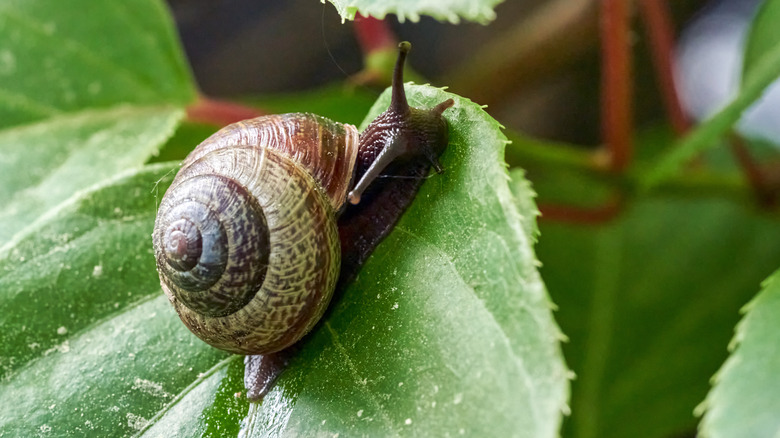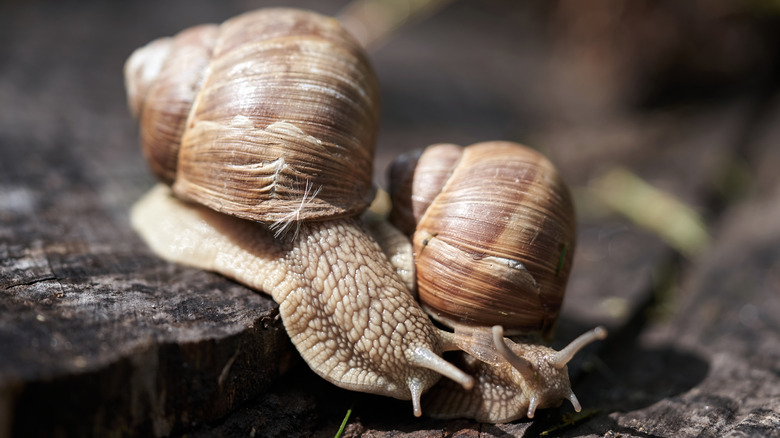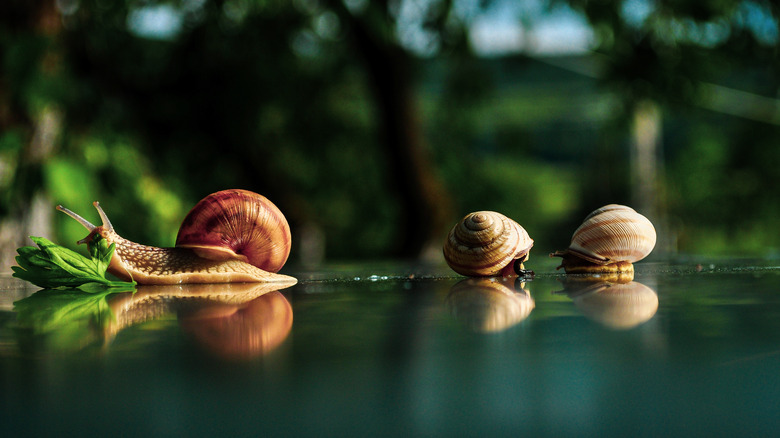Are Snails Born With Shells?
Snails are everywhere. They're all over the globe, as Snail World tells us — on land and in the water. Chances are you've seen small garden-variety snails where you live, or maybe you've seen more exotic varieties at a zoo or aquarium. There are more than 60,000 species out there. But regardless of where the snail is or how big it gets, they all have one thing in common: the iconic shell that sits on their backs. Some are plain, but others are decorated in vibrant colors and patterns that might make a fashion designer jealous.
So where do those shells come from? The answer is pretty simple. Most snails are born with them. They won't look the same at first, though. When a snail is born, the shell on their back is actually pretty soft and mostly transparent (via Animal Questions). It will take some time — and some active effort on the snail's part — to get the shell to where it needs to be to provide protection.
Growing an adult shell
The most important thing a snail can do to grow a stronger shell is to get the right nutrients. That means calcium, according to Animal Questions, which they can get a few different ways. Many snails will eat the egg they hatched from to get a head start (per BBC). In this case, at least, the early bird does get the worm — Animal Questions says some snails will even eat the shells of other unhatched snails to get the nutrients they need.
As they grow, the shell grows with them, and after about three months it will start to look a little more like the shell we know. The small shell they were first born with will usually end up at the center of the larger shell they grow as an adult, according to BBC, as new shell material builds up along the edges. Some snails will eventually ditch that shell if they outgrow it, according to Animal Questions, and pick up a bigger one that something else left behind.
What does the shell do?
Snails need their shells to survive. They're classified as mollusks because they don't have spines or segmented bodies, according to Snail World. That puts them in the same group as slugs and marine creatures like octopuses. Without a spine or a skeleton, their organs are mostly unprotected. Snail shells help to keep them safe, according to Snail World, by covering their body and organs. That includes the lung of land-based snails (per Snail World). For land-based snails, the shell also protects against the snail drying out.
Because the shell develops with a snail's growth, it can also be used to guess the snail's age (per BBC). The number of swirls in a snail's shell can indicate how long it's been alive and building up its armor. While some snails might move to bigger shells, you shouldn't try to remove a snail from its shell yourself (via JacAnswers). Forcing it out of the shell could hurt or kill the snail.


